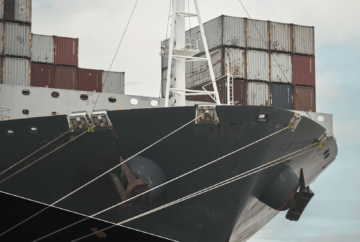THE FLEMISH PORT STRATEGY

Flanders has 3 major seaports and they all have their own interests and emphases: Port of Antwerp-Bruges, North Sea Port and the Port of Ostend. The aim of the Flemish Port Strategy is to complement and strengthen the individual strategies of these ports. But to do that, we need to join forces. That is the only way we can efficiently address the challenges for the ports and logistics sector and create tailor-made solutions, including for Flanders.
Objectives
The Flemish Port Strategy has three overall objectives:
- Strengthening the competitiveness of the ports
- Achieving sustainable growth and development
- Increasing added valueTo achieve those goals, the strategy focuses on 3 points:

To achieve those goals, the strategy focuses on 3 points:
- Further development of our ports as logistics hubs, with safe, smooth maritime access and a high-performance hinterland transport network and with multimodal hubs and intermodal hinterland hubs, supported by innovative and intelligent info structure
- Further develop the modal shift, with increased logistics flows to and from the port via sustainable modes such as rail, inland navigation, estuary shipping and pipelines and a focus on innovative concepts such as autonomous driving and shipping
- Making the green transition by focusing on anchoring an energy-efficient and low- carbon industry, climate-neutral fuels and energy sources for shipping, greening the fleet, circular economy and climate resilience
Investing in the future

When implementing the port strategy, we focus on specific pillars such as innovation and digital transformation, EU financing, security and resilience. The Flemish government is also attracting targeted investment with the aim of stimulating the growth of the Flemish ports. The objective is to generate more traffic to the Flemish ports and attract the expertise needed to innovate and evolve. After all, digitalisation and making our maritime-logistics industrial cluster sustainable are not feasible without international knowledge and expertise.
CONTACT

Latest insights & stories

AI and data integration: an indispensable symbiosis

Seven cybersecurity trends and threats for 2025
Last year saw another alarming increase in cyber-attacks, with hackers using increasingly sophisticated methods. Proximus NXT and its security partners explain how to navigate a minefield of vulnerabilities in 2025.
IT is innovating faster than ever. We should embrace the limitless possibilities in cloud adoption, generative and non-generative artificial intelligence and the increasing use of APIs, says our expert panel. At the same time, cyber criminals see such trends as opportunities to compromise businesses and are capitalizing on new vulnerabilities.

The az groeninge hospital innovates care with 5G
A private 5G network at az groeninge provides the platform for the hospital to roll out innovation. From remote monitoring with biosensors to robotic surgery and training using VR: everything is focused on patient care.